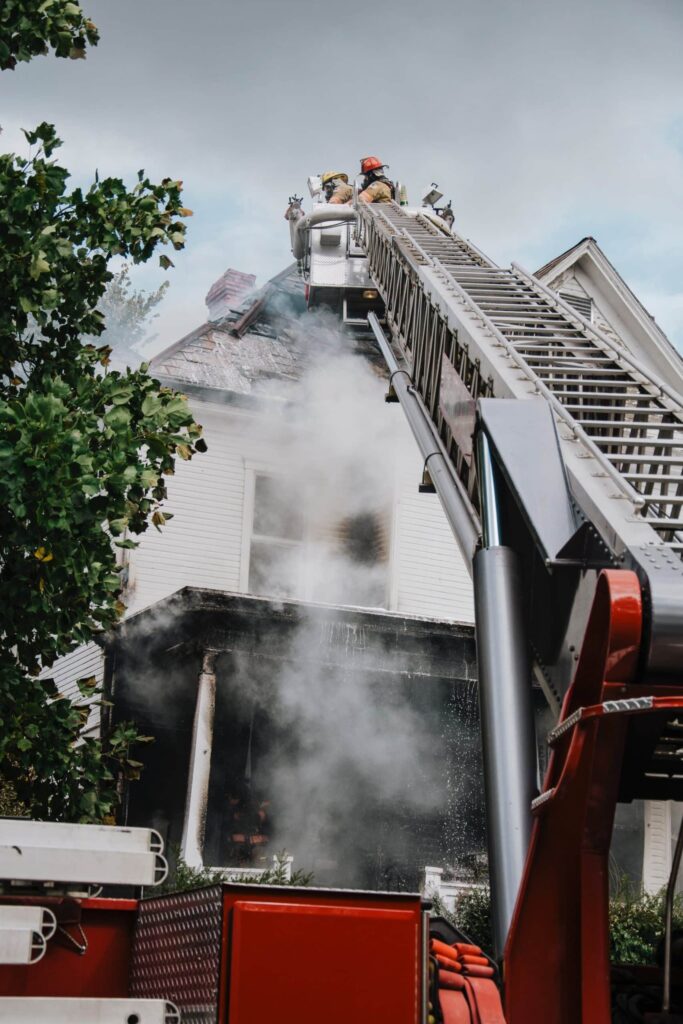Are You Ready for the True Cost of Hail Damage?
Hailstorms are unpredictable, but the damage they cause can be very costly. When a storm strikes, many homeowners are left wondering: How much will it cost to repair my roof? The cost of roof repairs after hail damage varies significantly, depending on several factors. At the end of the day, you just need to know what costs you may be facing with your insurance deductible or out-of-pocket.
Key Takeaways:
-
The average roof repair cost after a hailstorm
-
Factors that influence roof repair costs
-
How insurance affects your out-of-pocket expenses
-
When to consult an insurance lawyer or insurance attorney
Understanding the Hailstorm Damage: What Happens to Your Roof?
Hailstorms can cause a variety of roof damages, from minor cosmetic issues to significant structural problems. The severity of the damage depends on the size of the hailstones, the duration of the storm, and the condition of your roof.
Types of Roof Damage from Hail:
-
Shingle Granule Loss: Hail can knock off the protective granules on your shingles, making them more vulnerable to future weather damage and reducing their lifespan.
-
Cracked or Dented Shingles: When hailstones hit the shingles with enough force, they can cause cracks, which lead to leaks.
-
Punctures: In severe storms, large hailstones can puncture your roof, allowing water to infiltrate the home and causing significant water damage.
What Factors Influence Roof Repair Costs After a Hailstorm?
Several factors play into how much you will pay for roof repairs after a hailstorm. Let’s explore some of the most common ones:
1. Roof Size
The larger your roof, the more materials and labor will be needed to repair or replace it. Roof size is directly proportional to the cost of repairs.
2. Type of Roof
The type of roofing material you have also affects the cost. Asphalt shingles, for example, are usually less expensive to repair compared to slate or metal roofs, which are more durable but costlier.
3. Extent of the Damage
Minor cosmetic damage may only require patching or replacing a few shingles, while extensive damage could lead to a full roof replacement. The more severe the damage, the higher the costs.
4. Roofing Material Costs
The cost of roofing materials varies by type. Asphalt shingles are usually the most affordable, while materials like metal, clay, or slate tend to be more expensive. Given our current market, you can expect to see an increase in material costs. Consider inflation protection endorsements to help offset this expense in your policy.
5. Labor Costs
Labor costs vary depending on your location, the complexity of the roof, and the roofing company’s rates. A contractor in a metropolitan area may charge more than one in a rural area. Review multiple quotes from trusted contractors.
6. Location and Accessibility
If your roof is hard to access, repair costs can increase. For example, a steeply sloped roof or a home with multiple stories will generally cost more to repair than a one-story home with a straightforward roofline.
What’s the Average Roof Repair Cost After a Hailstorm?
The cost of roof repair after a hailstorm varies widely, but here are some general estimates to give you an idea of what to expect:
-
Minor Damage: If your roof has only experienced small, cosmetic damage (like losing granules from the shingles), you may only pay a few hundred dollars for repairs.
-
Moderate Damage: If shingles are cracked or dented but not fully compromised, expect to pay between $1,000 and $3,000, depending on the size and type of roof.
-
Severe Damage: If the hailstorm caused significant damage, such as punctured or missing shingles or structural damage, roof repairs could range from $5,000 to $10,000 or more. In some cases, you may need a full roof replacement.
- Mitigation: It’s important to note that with any damage, your policy does hold you responsible for mitigating the damages. Ask a trusted contractor for tips or visit our YouTube channel for simple solutions to hold your roof over while your claim is being decided on or disputed.
How Does Insurance Affect Roof Repair Costs?
Understanding how your insurance policy works is crucial when calculating roof repair costs after a hailstorm. Many homeowners rely on their insurance coverage to pay for repairs, but there are several things to keep in mind:
1. Your Deductible
Your insurance policy will have a deductible, which is the amount you must pay out of pocket before your insurance coverage kicks in. This deductible is usually a percentage of your home’s value (e.g., 1-2%). For example, if your deductible is 1% of a $200,000 home, you would need to pay $2,000 before your insurance will cover the remaining repair costs.
2. Actual Cash Value vs. Replacement Cost
Some insurance policies offer Actual Cash Value (ACV) coverage, which takes depreciation into account when reimbursing you for repairs. Others offer Replacement Cost Coverage, which pays for repairs based on the cost to replace the damaged roof with a new one. If you have ACV coverage, you may receive less compensation, which means you might need to pay more out of pocket.
3. Exclusions and Limits
Not all damage may be covered under your policy. For example, if your roof was already in poor condition or you failed to maintain it, the insurance company might refuse to cover repairs. It’s also important to check for any storm-specific exclusions in your policy.
4. How to File a Claim
When hail damage occurs, it’s essential to file your claim as soon as possible. Take photos, document the damage, and work with a roofing contractor to assess the extent of the damage. If your claim is denied or you believe the payout is insufficient, consulting an insurance lawyer can help you appeal the decision.
What Should You Do If Your Roof is Damaged?
If your roof is damaged by hail, the first steps are critical in preventing further issues and reducing repair costs.
1. Document the Damage
Before making repairs, take photos and videos of the damage. This documentation will be essential when filing your insurance claim.
2. Call a Roofing Professional
A professional roofing contractor can assess the damage and provide an estimate for repairs. They may also help you with your insurance claim by providing an expert opinion on the extent of the damage.
3. Contact Your Insurance Company
Notify your insurance company about the damage as soon as possible. They will send an adjuster to assess the damage and determine the amount they are willing to cover.
4. Consult with an Insurance Lawyer
If your claim is denied or if you feel that the payout is too low, an insurance lawyer can help you navigate the legal process and ensure that you receive fair compensation.
Prepare for the Unexpected
Hail damage can cause significant expenses, but understanding the factors that influence repair costs and knowing how to work with your insurance company can save you money in the long run. Always make sure you are adequately covered and take the right steps to ensure that your repairs are fully covered. If you run into issues with your claim, don’t hesitate to reach out to an insurance attorney or insurance lawyer to help guide you through the process and secure the compensation you deserve.
📌 If your roof has suffered hail damage, don’t wait. Contact our team of experts today for a free case evaluation and to learn more about how we can help you determine next steps with your insurance claim.
FAQs
1. How much will my roof repair cost after a hailstorm?
The cost of repairs can range from a few hundred dollars for minor cosmetic damage to several thousand dollars for severe damage. It depends on the size of the roof, the materials, and the extent of the damage.
2. Does insurance cover all roof repair costs after a hailstorm?
It depends on your insurance policy. Some policies may cover all damages, while others have exclusions and limitations. Make sure to understand your policy before making a claim.
3. When should I contact an insurance lawyer for hail damage?
If your claim is denied or underpaid, or if you believe your insurance company is not offering a fair settlement, it’s a good idea to consult with an insurance attorney.

















